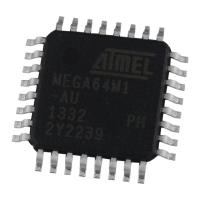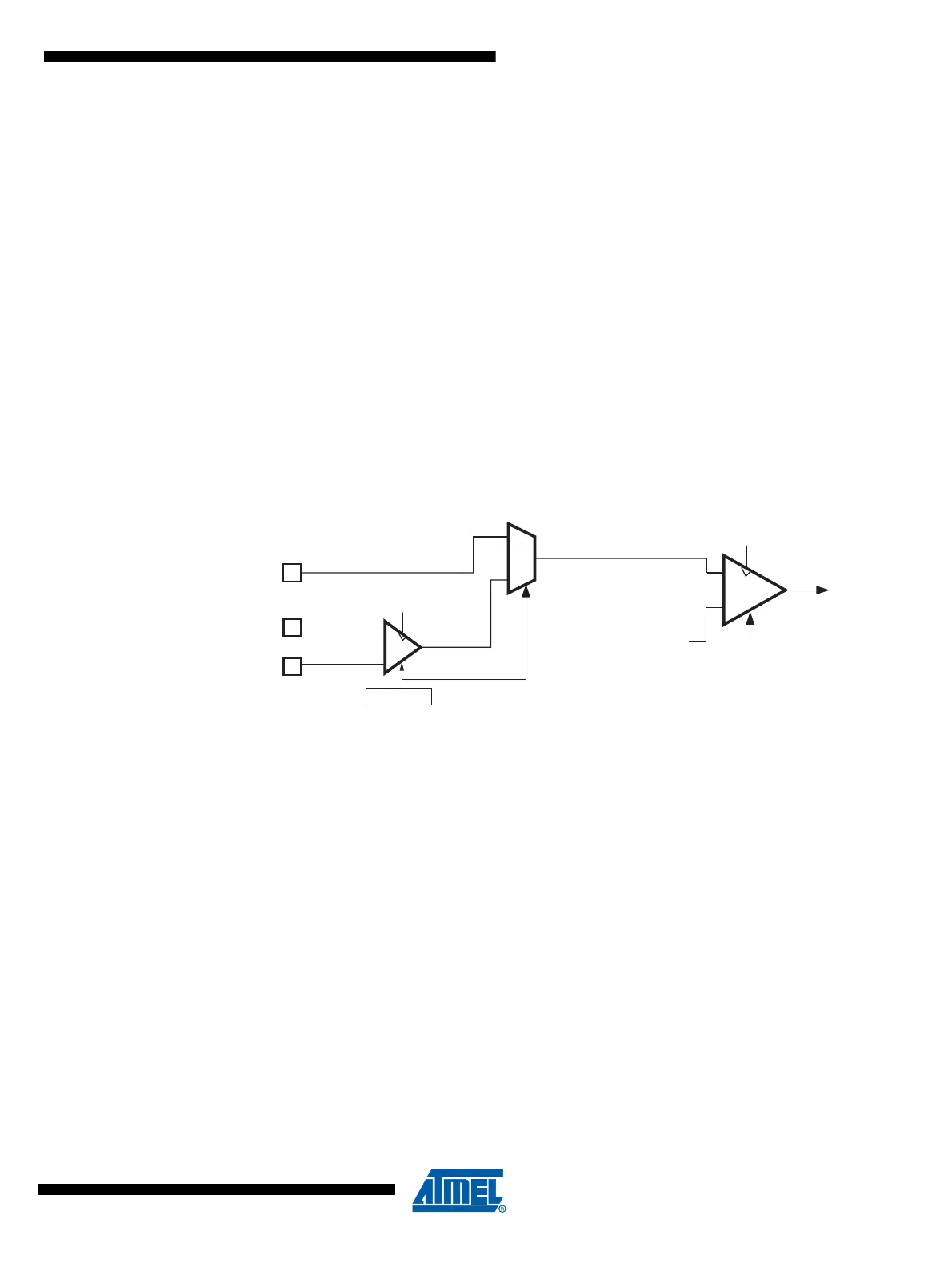275
7647H–AVR–03/12
Atmel ATmega16/32/64/M1/C1
22. Analog Feature Considerations
22.1 Purpose
The ATmega16/32/64/M1/C1 features several analog features such as ADC, DAC, Amplifiers,
Comparators...
The purpose of this section is to describe the interaction between these features. This section
explains how to set the specific registers to get the system running.
Particularly the different peripheral clocks can interfere together, so special care has to be
considered.
22.2 Use of an Amplifier as Comparator Input
The internal amplifiers provide differential amplification for ADC converter. To allow signed result
with the ADC, the output level of the amplifiers is shifted up with a Vref/2 voltage.
For this reason, when used with a comparator, a Vref/2 voltage is added to the voltage of the
amplifier outputs.
Figure 22-1. Amplifier and Comparator
The amplifier Clock comes from the ADC and is equal to the ADC Clock divided by 8.
22.3 Use of an Amplifier as Comparator Input and ADC Input
The amplifier can be used as ADC input while it is used as comparator input. In that case, each
time the amplifier is selected as ADC input, the sampling and hold circuit of the ADC loads the
amplifier output. It results a decrease of the amplifier output voltage which can toggle the com-
parator output.
+
-
ACMPx
ACxEN
AMPx
+
-
AMPCMPx
Analog Comparator
Negative Input
Analog Comparator
Output
AMPx+
AMPx-
Comparator
Clock
Amplifier
Clock

